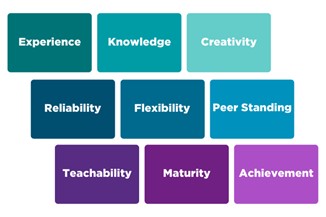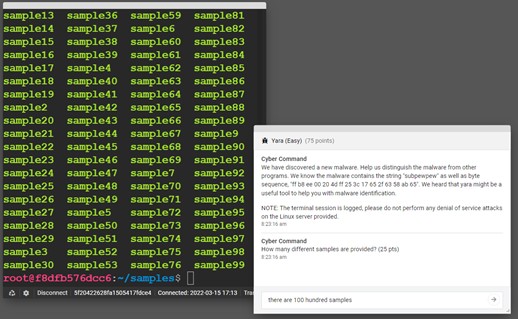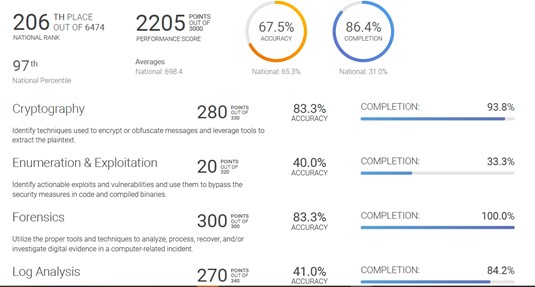“I’m certified, and I’ve been putting my resume out there. But I’m not getting many interviews. What can I do to get noticed?” I’ve fielded versions of this question from career changers and experienced IT pros throughout the world.
It’s easy to say that getting attention occurs when both sides of the hiring discussion agree on a few well-known factors, and that the process is entirely logical. In that perfect world, getting the attention of a hiring manager is the result of a logical skills measurement process, where metrics are king.
But a lot of folks feel like they’ve been stuck in some sort of measurement matrix. That feeling can be frustrating – even disheartening.
Catch Fire with the Right Hiring Elements
It’s important to remember that the hiring process is really an exercise in building trust. To build trust, you have to combine a number of critical elements. The problem is, some of these elements are under your control as a job seeker, and some, well, just aren’t.
My favorite analogy is comparing the hiring process to starting a campfire. To build a fire, you need three things: Oxygen, heat and fuel. This is known as the “fire triangle.”

Figure 1: The three elements needed to create fire
When it comes to catching a spark in a job interview, you need to get more than just three elements, right?
You need to validate your experience, knowledge, creativity, reliability, flexibility, peer standing, teachability, maturity and achievement. You must be able to show some combination of these elements during the hiring process.

Figure 2: Elements you need to validate during the hiring process
Escape the Trust Matrix
It’s on you to produce evidence that a hiring manager can trust you. But it’s on the hiring manager to clearly state the metrics that catch their attention. Otherwise, you have a broken dialog.
Building trust most often involves answering the following questions for hiring managers:
- How does this person rank with a particular peer group – say, a group of security analysts?
- How well does this person adjust to the unexpected, and to changes in direction?
It’s your job to figure out how to efficiently answer these questions.
Attract the Right Kind of Attention
Codify and Record Your Learning Artifacts
Traditionally, hiring managers would review information such as the type of college you attended. Those outdated ways of determining skill and fit hardly encourage diversity, equity and inclusion.
It’s high time that hiring managers look beyond mere pedigree, and instead focus on skills. Back in the day, all a hiring manager had to do was ask questions like: “What university did he graduate from?” and “What was her GPA?” Thankfully, those times are past.
Therefore, it’s your job to turn all the random learning data and skills artifacts you have generated into actual, actionable information that answers the trust-building questions I mentioned earlier.Engage in Hands-On Activities
To make your mark and raise your hiring manager profile, consider doing the following:
- Get certified – CompTIA certifications, for example, test both your knowledge and skills and validate that you’re able to perform the duties required on the job.
- Demonstrate your ability to work with others by doing volunteer work for nonprofit organizations (e.g., clubs, co-ops, schools, church groups), and by doing group-based activities
- Show evidence of your hands-on activities by getting testimonials and putting them in your LinkedIn profile
- Assure hiring managers that you can adjust to constantly-changing conditions by doing ad-hoc work for people – from neighbors to family to co-workers – experience is experience
Hiring managers are looking for workers that can handle today’s asynchronous working environments.
Cybersecurity Pros: Prove Your Experience
One way you can bolster certification badges is by engaging in hands-on activities, such as those put on by the National Cyber League (NCL). The NCL connects both new and experienced IT and security workers through group-based activities and competitions. You can engage in security competitions that include hands-on practice in skills ranging from cryptography to pen testing and security analytics.
During these activities, you’ll learn about using Open Source Intelligence (OSINT), how to conduct reconnaissance, follow the steps of the hacker lifecycle (e.g., the Lockheed Martin Cyber Kill Chain) and conduct security analytics.
For example, Figure 3 below shows the beginning of an exercise where you will use Yara to discover a particular indicator of compromise (IoC) found in a particular piece of code.

Figure 3: Typical hands-on mission statement from an NCL competition
One of the features of the NCL is that you can obtain a report that shows your learning and activity artifacts, such as that shown here in Figure 4.

Figure 4: A sample NCL activity report
This report does more than just rank your performance. As shown in Figure 5, it can also provide considerable detail about your hands-on mastery of various security practices.

Figure 5: Detailed NCL report information
Cyber Skyline, the outfit that provides the platform for the NCL, works with organizations such as Lockheed Martin, CloudStrike and Capital One, who value the reports from these competitions. I was talking with Franz Payer, Cyber Skyline’s CEO, the other day, and he told me how today’s companies are always interested in finding ways to analyze and draw lessons from the data exhaust from almost any hands-on learning exercise.
The Scouting Report drills down into various game modules, including cryptography, enumeration, log analysis, OSINT and several others.
Create Indicators of Trust
I think that these scouting reports, combined with IT certifications, are a powerful indicator of trust for hiring managers. That’s why CompTIA and the NCL have been partners for some time.
Our job at CompTIA is to move the skills needle and build a qualified workforce. If you focus on providing evidence of hands-on activities using resources like the NCL’s scouting reports, you’ll quickly discover additional ways you can build trust with hiring managers.
Get more articles like this right in your inbox with CompTIA’s IT Career Newsletter. Subscribe today

